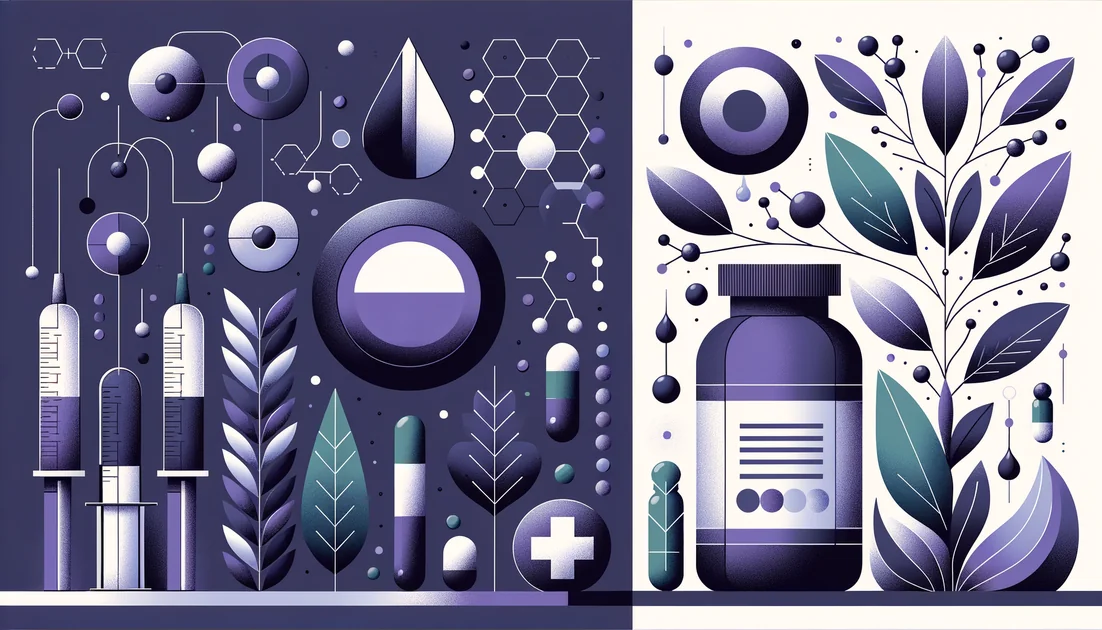
The Bark That Becomes a Blanket: Slippery Elm from Campfire Gruel to Clinic Cup
In three Midwestern clinics, patients with raw, burning throats were handed steaming cups of a simple herbal tea. Within minutes, many said the pain eased. The recipe? A demulcent blend starring the inner bark of a North American tree whose gift is texture—a silky gel that acts like a temporary blanket for irritated tissue. Slippery elm's story begins at Indigenous campfires and winds up in randomized trials and, oddly, in the mouths of old-school baseball pitchers.
- Evidence
- Traditional Use
- Immediate Effect
- Within minutes for throat comfort (tea/lozenges) → Minutes for throat; days to a couple of weeks for digestive comfort (variable)
- Wears Off
- Coating effect fades within hours after last dose; symptoms may
From bark to bowl
Long before pharmacies, Indigenous healers across eastern North America peeled thin strips of slippery elm's inner bark, chewed it to quench thirst, and laid poultices over burns and sores. Taken as a tea or gruel, it soothed sore throats, quieted stomachs, and supported women in childbirth. Colonists learned quickly; by 1820, "Slippery Elm" appeared in the first United States Pharmacopeia as official medicine—and remained there until 1936, then in the National Formulary until 1961. In other words, for more than a century, American medicine considered tree-bark porridge a legitimate drug. [2][1] Herbalist David Hoffmann once called it "a soothing, nutritive demulcent perfectly suited for treating sensitive or inflamed mucous membranes of the digestive system." The word demulcent comes from Latin for "to caress"—an apt verb for a plant whose power is touch. [14]
What the gel actually does
The inner bark is loaded with mucilage, long chains of natural sugars that swell with water into a slick gel. When you sip it, that gel clings to the throat and stomach, prompting saliva and protective mucus and literally shielding raw surfaces from friction, acid, and spice. Think of it as laying a thin, edible raincoat over irritated tissue. That same coating explains a practical caveat: take it away from medicines, because the gel can slow or reduce drug absorption. [3][8]
A 30-minute window into its relief
Back to those clinic cups. In a randomized, double-blind trial of adults with acute pharyngitis, a traditional "Throat Coat" tea—slippery elm with other classic demulcents—beat a placebo within 5 to 10 minutes, continuing to relieve pain over 30 minutes after the first dose. It didn't cure the infection; it just made swallowing hurt less, fast. That's demulcency in action, and while the blend contained more than elm alone, it offers a clear proof-of-concept for the soothing, short-term effect people feel. [4] Major cancer center guidance keeps expectations grounded: slippery elm "may help relieve minor cough or sore throat," but there's no evidence it treats infections, cancer, or serious disease. Its role is comfort, not cure. [5]
Gut feelings: early signals, honest limits
What about the belly? A small open-label pilot gave patients with irritable bowel syndrome two different formulas. The constipation-focused mix—built around powdered slippery elm plus gentle fibers—was associated with improved stool consistency and reductions in straining, bloating, and abdominal pain during the treatment period. It wasn't a rigorous, single-herb trial, but it hints at why some people with IBS keep a jar of elm powder in the kitchen. [6] At the lab bench, a gastroenterology group incubated inflamed ulcerative colitis biopsies with various herbs and found that slippery elm reduced the release of damaging oxygen radicals, in some tests performing like standard antioxidant drugs. It's a glimpse—not a clinical endorsement—that the bark's benefits may include more than a physical film. [7] Taken together, the research paints a measured picture: rapid, short-lived throat comfort is supported by a controlled trial of a demulcent blend; digestive benefits are plausible but rest on tradition, combinations, and preclinical data rather than robust, single-agent clinical trials. [4][6][7][5]
The paradoxes that make it memorable
There's poetry and caution in how slippery elm works. The same gel that comforts tissue can also tangle with pills—so time it a couple of hours away from medications. [8] And the tree that soothes can be harmed by how we harvest it. In Kentucky's Daniel Boone National Forest, a U.S. Forest Service botanist pointed to a stripped trunk and said, "It doesn't know it's dead," the leaves still green while the lifeline—its inner bark—was gone. The lesson: choose products that commit to careful, branch-only harvests or cultivated sources; some companies partner with Appalachian families to do exactly that. [10][9] Then there's the strangest chapter: mid-century spitball pitchers reportedly chewed slippery elm tablets to supercharge saliva. Hall-of-Famer Gaylord Perry even wrote about it. A demulcent becomes a competitive edge—proof that once you understand texture, you can bend it to human aims, noble or not. [13]
How people actually use it today
In practice, people reach for slippery elm in three commonsense ways:
Tea or "slurry." Powdered inner bark whisked into hot water thickens into a mild, oatmeal-like drink. In the sore-throat trial, participants drank 5–8 oz cups several times a day. [4]
Lozenges. Canada's throat-lozenge monograph even lists slippery elm bark powder (200–300 mg per lozenge), taken every 1–2 hours up to 6 g/day, for temporary throat protection. [12]
Blend formulas. Many commercial teas pair elm with licorice and marshmallow—other demulcents—for a smoother sip; some producers emphasize sustainable, small-scale bark collection in Appalachia. [9]
A few practical notes keep it safe and satisfying:
Take it with plenty of water so the powder can swell comfortably.
Separate from oral medicines by 1–2 hours to avoid absorption issues.
Expect effects to be felt, not seen: relief usually arrives within minutes for throats; digestive comfort, if it comes, tends to be gentle and gradual. [4][8]
Where tradition and evidence meet
If slippery elm has a center of gravity, it's the everyday human sensation of "ahh." That's what Indigenous healers observed; that's what the Pharmacopoeia codified; that's what a modern clinical trial measured with a stopwatch. The rest—IBS relief, colitis nuance—remains a frontier where stories outpace studies. Used wisely, it's a humble tool: GRAS-rated, generally well tolerated, and more about comfort than cure. Hold it like a warm cup on a cold day: not magic, but meaningful. [15][5]
"Slippery elm is a soothing, nutritive demulcent.." —David Hoffmann, Medical Herbalism. [14]
"It doesn't know it's dead." —David Taylor, U.S. Forest Service botanist, on a bark-stripped tree. [10]
Key takeaways
- •Slippery elm's mucilage creates a soothing coating for irritated throat and gut linings, offering quick comfort rather than disease cure.
- •It has deep roots in North American practice and appeared in the U.S. Pharmacopeia (1820–1936) and National Formulary (to 1961), signaling long medical use.
- •A demulcent tea including slippery elm reduced throat pain within 5–10 minutes in a trial; gut data are limited to small pilots and in-vitro findings.
- •Practical dosing: 5–8 oz demulcent tea several times daily for sore throat; lozenges often provide 200–300 mg bark powder every 1–2 hours, up to 6 g/day—follow labels.
- •Timing matters: take slippery elm at least 1–2 hours apart from oral medicines, as the gel can delay or reduce absorption.
- •Generally well tolerated; rare allergies can occur. Best suited for minor sore throats, voice strain, or gentle, short-term digestive soothing.
You might also like
Explore more of our evidence-led investigations, comparisons, and guides across every article style.

BulkSupplements.com (Hard Eight Nutrition LLC)
BulkSupplements: GMP-certified workhorse with recurring accuracy questions

Berberine (dietary supplement) vs Metformin (prescription biguanide)
For most people needing reliable glucose lowering and long-term outcome data, choose metformin. Consider berberine if you can't take metformin and want a modest, supplement-based metabolic aid from a vetted brand, with attention to interactions and pregnancy avoidance. [1][3][8]


Blueberry (Vaccinium spp.)
In 1911, a USDA botanist and a cranberry farmer's daughter walked the pine barrens of New Jersey tagging wild bushes by taste, color, and grit. They weren't just domesticating a fruit; they were bottling a color—blue—that a century later would out to whisper to our blood vessels and brains. [1]

Quercetin + Bromelain + C: Allergy & Airways Combo?
Theory-supported, partially studied combo; helpful for some, but true "A+B>C than A or B alone" synergy is unproven.

Tocotrienols
The stealthier cousins of vitamin E—built with springy tails that move differently in cell membranes and behave differently in your body.


